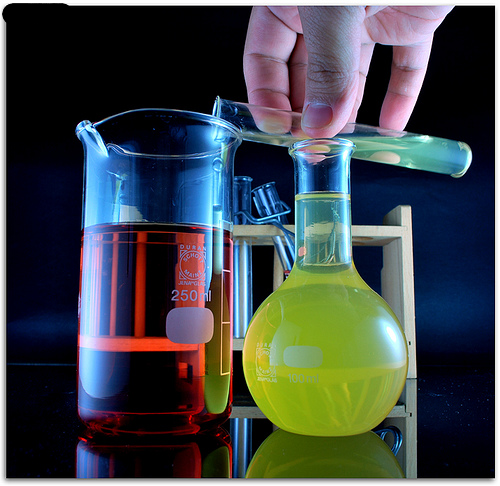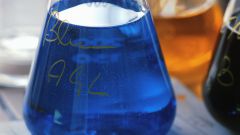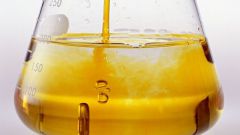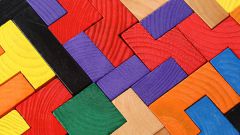You will need
- 1. A mixture of equal volumes of 0.12 n of acids: phosphoric, acetic, boric.
- 2. Caustic soda NaOH and 0.2 n.
- 3. Indicators:
- Tropeolin 00, 0.1% aqueous solution.
- Methyl orange, 0.1% aqueous solution.
- Methyl red, 0.1% solution in 60% alcohol.
- Bronchiology blue, 0.05% solution in 20% alcohol.
- Crazyby red, 0.04 percent aqueous solution.
- Phenolphthalein, 0.1 percent alcoholic solution.
- Thymolphthalein, 0.1 percent alcoholic solution.
- The transition table of svetvincenat
- Table of acid-base indicators.
Instruction
1
Guide the preliminary determination of the pH of the test solution by using universal indicator or universal indicator paper. The degree of acidity of the aqueous solution is expressed by hydrogen index (number of hydrogen ions), the value of which ranges from 0 (very high acidity) to 14 (very high alkalinity). The change in hydrogen ion concentration corresponds to 10 times pH changes by one unit. A neutral environment has a ph equal to 7 (at room temperature). Methyl orange at pH < 3,1 is red, and at pH > 4,4 – yellow; litmus at a pH of < 5 is red and at pH > 8 blue. For example, you have litmus paper is red color therefore, the test solution has high acidity, pH value less than 5.
2
Find in the table the indicators that more accurately diagnose a region of acidity, have some universal indicator. Ie look at what the indicator in the observed values of pH from 0 to 5 – methylene red, methylorange and tropeolin 00.
3
Prepare standard buffer solutions, covering this area of pH. To do this, take a calibrated dry test tubes, place them in 5 ml of a mixture of acids, caustic soda put into each tube, respectively table. Number (or otherwise label) them. Stir the solution and with a pipette remove the excess, bringing the volume of solution in each test tube until exactly 5 ml.
4
In a separate clean tube (if you check several indicators, take the vial according to the number of indicators) dial 5 ml of test solution. Add 2 drops of the indicator and compare color of the test solution with the color of the standard solutions series.




